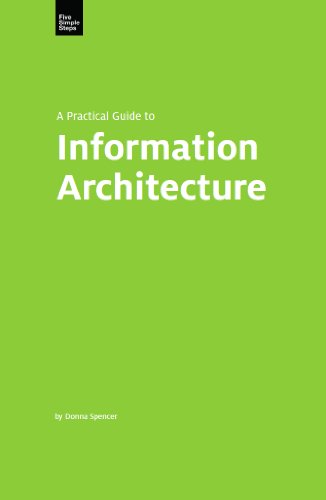
Information architecture, or IA, is a term that you’ve probably come across quite often if you’re in the experience design field, but what exactly is IA? What is the relationship between IA and navigation? And what are the things that we need to keep in mind if we want to construct a good IA for our project?
These were some of the questions I used to have about IA, and the book A Practical Guide to Information Architecture, written by Donna Spencer, provides answers to these questions.
IA and Navigation
While IA and navigation are closely related, they are actually different concepts. Readers can easily distinguish these two terms using the definitions provided by the book.
An analogy is used at the beginning of the book to introduce IA. Just like everything in a supermarket is sorted into categories with labels, information architecture is about organizing and grouping content, and then appropriately and clearly labeling these groups so that users can find what they need easily.
On the other hand, navigation refers to the specific design that allows people to traverse the IA. It can be a horizontal menu, a vertical menu, an inverted-L shaped navigation, a tab, or a dropdown/flyout menu etc. Other common navigation patterns include breadcrumb, tag cloud, site map, A-Z index and footer.
People and Content
The book approaches the topic of IA construction mainly from the angles of people and content.
People
Understanding user goals and needs is the first step to creating a good IA, and several chapters of the book are dedicated to basic user research methodologies. For experienced UXers, these chapters could seem a bit generic and probably would be boring to read through.
What I found more interesting are the chapters on how people look for information and how they think about categories. The book does a good job of summarizing the people’s information seeking behaviors, which include finding a known item, exploring, refining, comparing, and discovering. For many of these behaviors, common design solutions are also mentioned. For example, search can be used when a user is trying to find a known item, and related links are helpful if we want to encourage a user to discover. In a user’s mental model, boundaries of categories can be fuzzy and overlapping. When people try to decide whether an item should belong to a category, there’s often ambiguity.
Content
To create a good IA, besides understanding people, we also need to properly plan, group and label our content.
Content planning requires us to get a big picture of what we already have and to know what new content is needed. The book suggests doing an audit and creating an inventory of existing content. Then we move on to determine which content is unstructured or structured, and define the content format.
There’s a comprehensive list of classification schemes in the book for grouping content, including audience, task, subject/topic, alphabet, geography, time, format and organization. Pros and cons of these schemes are discussed: overlapping category boundaries seem to be a common problem, and the subject/topic scheme is the recommended by the author.
Labels assigned to the groups need to be clear, correct, consistent, and easily understood by the audience. This coincides with some of the suggestions made about link labeling in a recent article on information scent by the Nielsen Norman group.
IA patterns can be used to organize the content groups. These include hierarchy, database, hierarchical+database, catalog and sub-sites etc.
Once we’ve created a draft IA, we can usability test it to see how well it works. The book talks about using scenarios to give participants a better context, which is consistent with the video by the Nielsen Norman group on characteristics of an appropriate usability testing task.
Final Thoughts
The book is an easy read and equips readers with the essentials of information architecture. It encompasses insights on people’s information seeking patterns, our mental model for categories, and tips and techniques for planning, grouping and labeling content. There’s a concise summary at the end of each chapter, which is convenient for readers to refresh what they’ve learned.

